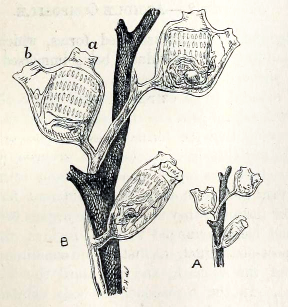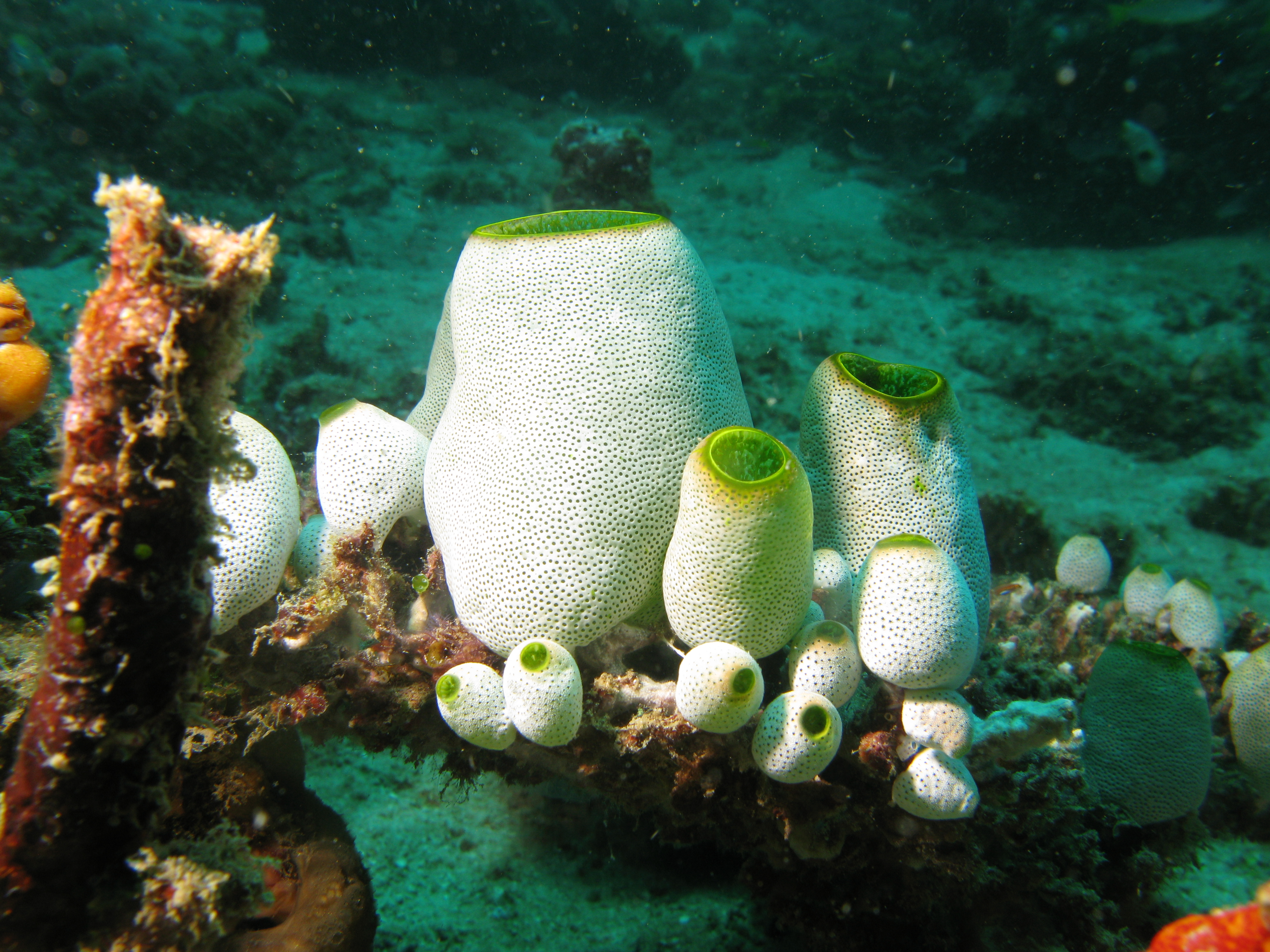|
Perophoridae
Perophoridae is a sea squirts family in the suborder Phlebobranchia Phlebobranchia is a suborder of sea squirts in the class Ascidiacea. Characteristics The group includes both colonial and solitary animals. They are distinguished from other sea squirts by the presence of longitudinal vessels in the pharynge .... References External links Enterogona Tunicate families {{tunicata-stub ... [...More Info...] [...Related Items...] OR: [Wikipedia] [Google] [Baidu] |
Phlebobranchia
Phlebobranchia is a suborder of sea squirts in the class Ascidiacea. Characteristics The group includes both colonial and solitary animals. They are distinguished from other sea squirts by the presence of longitudinal vessels in the pharyngeal basket. This provides the etymology of their name: in ancient greek, means "blood vessel". Another characteristic of phlebobranchians is the gonads being surrounded by a loop of gut. The posterior part of the abdomen is absent, and many species also lack the epicardial cavity that surrounds the heart and other internal organs in many other sea squirts. Taxonomy * ?† Permosomidae ** ?†'' Permosoma tunicatum'' Jaekel 1915 'Sphaerospongia permotessellata'' Parona 1933* Agneziidae Monniot & Monniot 1991 gnesiidae Michaelsen 1898**'' Adagnesia'' Kott 1963 **'' Agnezia'' Monniot & Monniot 1991 'Agnesia'' Michaelsen 1898 non Koninck 1883**'' Caenagnesia'' Ärnbäck-Christie-Linde 1938 **'' Proagnesia depressa'' (Millar 1955) **'' Pter ... [...More Info...] [...Related Items...] OR: [Wikipedia] [Google] [Baidu] |
Perophora
''Perophora'' is a sea squirt genus in the family Perophoridae. Most species are found in shallow warm water but a few are found in higher latitudes. A colony consists of a number of zooids which bud off from a long slender stolon. Characteristics A ''Perophora'' colony consists of a system of stolons from which individual zooids arise at intervals. Each zooid has four or five rows of stigmata in the wall of the atrium, the one exception being '' Perophora multistigmata'' which has eight rows. In some cases, the five-rowed species have some stigmata extending over the first and second rows indicating that the primary number of rows is four. In '' Ecteinascidia'', the only other genus in the family, there are always eight or more rows of stigmata, usually twelve to twenty rows. Other distinguishing characteristics are that ''Perophora'' has a horizontal gut loop with a short rectum The rectum is the final straight portion of the large intestine in humans and some other ma ... [...More Info...] [...Related Items...] OR: [Wikipedia] [Google] [Baidu] |
Perophora Namei
''Perophora namei'' is a sea squirt species in the genus ''Perophora ''Perophora'' is a sea squirt genus in the family Perophoridae. Most species are found in shallow warm water but a few are found in higher latitudes. A colony consists of a number of zooids which bud off from a long slender stolon. Characteris ...'' found in Central Indo-Pacific. ''P. namei'' produces the alkaloid perophoramidine. References External links * * Enterogona Animals described in 1928 {{tunicata-stub ... [...More Info...] [...Related Items...] OR: [Wikipedia] [Google] [Baidu] |
Animal
Animals are multicellular, eukaryotic organisms in the Kingdom (biology), biological kingdom Animalia. With few exceptions, animals Heterotroph, consume organic material, Cellular respiration#Aerobic respiration, breathe oxygen, are Motility, able to move, can Sexual reproduction, reproduce sexually, and go through an ontogenetic stage in which their body consists of a hollow sphere of Cell (biology), cells, the blastula, during Embryogenesis, embryonic development. Over 1.5 million Extant taxon, living animal species have been Species description, described—of which around 1 million are Insecta, insects—but it has been estimated there are over 7 million animal species in total. Animals range in length from to . They have Ecology, complex interactions with each other and their environments, forming intricate food webs. The scientific study of animals is known as zoology. Most living animal species are in Bilateria, a clade whose members have a Symmetry in biology#Bilate ... [...More Info...] [...Related Items...] OR: [Wikipedia] [Google] [Baidu] |
Chordata
A chordate () is an animal of the phylum Chordata (). All chordates possess, at some point during their larval or adult stages, five synapomorphies, or primary physical characteristics, that distinguish them from all the other taxa. These five synapomorphies include a notochord, dorsal hollow nerve cord, endostyle or thyroid, pharyngeal slits, and a post-anal tail. The name “chordate” comes from the first of these synapomorphies, the notochord, which plays a significant role in chordate structure and movement. Chordates are also Bilateral symmetry, bilaterally symmetric, have a coelom, possess a circulatory system, and exhibit Metameric, metameric segmentation. In addition to the morphological characteristics used to define chordates, analysis of genome sequences has identified two conserved signature indels (CSIs) in their proteins: cyclophilin-like protein and mitochondrial inner membrane protease ATP23, which are exclusively shared by all vertebrates, tunicates and cep ... [...More Info...] [...Related Items...] OR: [Wikipedia] [Google] [Baidu] |
Ascidiacea
Ascidiacea, commonly known as the ascidians, tunicates (in part), and sea squirts (in part), is a polyphyletic class in the subphylum Tunicata of sac-like marine invertebrate filter feeders. Ascidians are characterized by a tough outer "tunic" made of a polysaccharide. Ascidians are found all over the world, usually in shallow water with salinities over 2.5%. While members of the Thaliacea and Larvacea (Appendicularia) swim freely like plankton, sea squirts are sessile animals after their larval phase: they then remain firmly attached to their substratum, such as rocks and shells. There are 2,300 species of ascidians and three main types: solitary ascidians, social ascidians that form clumped communities by attaching at their bases, and compound ascidians that consist of many small individuals (each individual is called a zooid) forming colonies up to several meters in diameter. Sea squirts feed by taking in water through a tube, the oral siphon. The water enters the mouth ... [...More Info...] [...Related Items...] OR: [Wikipedia] [Google] [Baidu] |
Enterogona
Ascidiacea, commonly known as the ascidians, tunicates (in part), and sea squirts (in part), is a polyphyletic class in the subphylum Tunicata of sac-like marine invertebrate filter feeders. Ascidians are characterized by a tough outer "tunic" made of a polysaccharide. Ascidians are found all over the world, usually in shallow water with salinities over 2.5%. While members of the Thaliacea and Larvacea (Appendicularia) swim freely like plankton, sea squirts are sessile animals after their larval phase: they then remain firmly attached to their substratum, such as rocks and shells. There are 2,300 species of ascidians and three main types: solitary ascidians, social ascidians that form clumped communities by attaching at their bases, and compound ascidians that consist of many small individuals (each individual is called a zooid) forming colonies up to several meters in diameter. Sea squirts feed by taking in water through a tube, the oral siphon. The water enters the mout ... [...More Info...] [...Related Items...] OR: [Wikipedia] [Google] [Baidu] |
Alfred Mathieu Giard
Alfred Mathieu Giard (8 August 1846 – 8 August 1908) was a French zoologist born in Valenciennes. Biography In 1867 he began his studies of natural sciences at the École Normale Supérieure, followed by work as ''préparateur de zoologie'' at the laboratory of Henri de Lacaze-Duthiers (1821–1901) in Paris. In 1872 he defended his doctoral thesis with a study on compound ascidians titled "''Recherches sur les ascidies composées ou synascidies''". From 1873 to 1882, he was ''professeur suppléant'' of natural history at the faculty of sciences in Lille, and in the meantime, was also affiliated with the Institut industriel du Nord. In 1874 he founded a biological station at Wimereux in order to familiarize his students to marine and terrestrial organisms. At Lille, he is credited for putting together an excellent school of zoology. In 1887 he became a lecturer at the École Normale Supérieure, and from 1888 until his death, he was a professor at the faculty of sciences in P ... [...More Info...] [...Related Items...] OR: [Wikipedia] [Google] [Baidu] |




